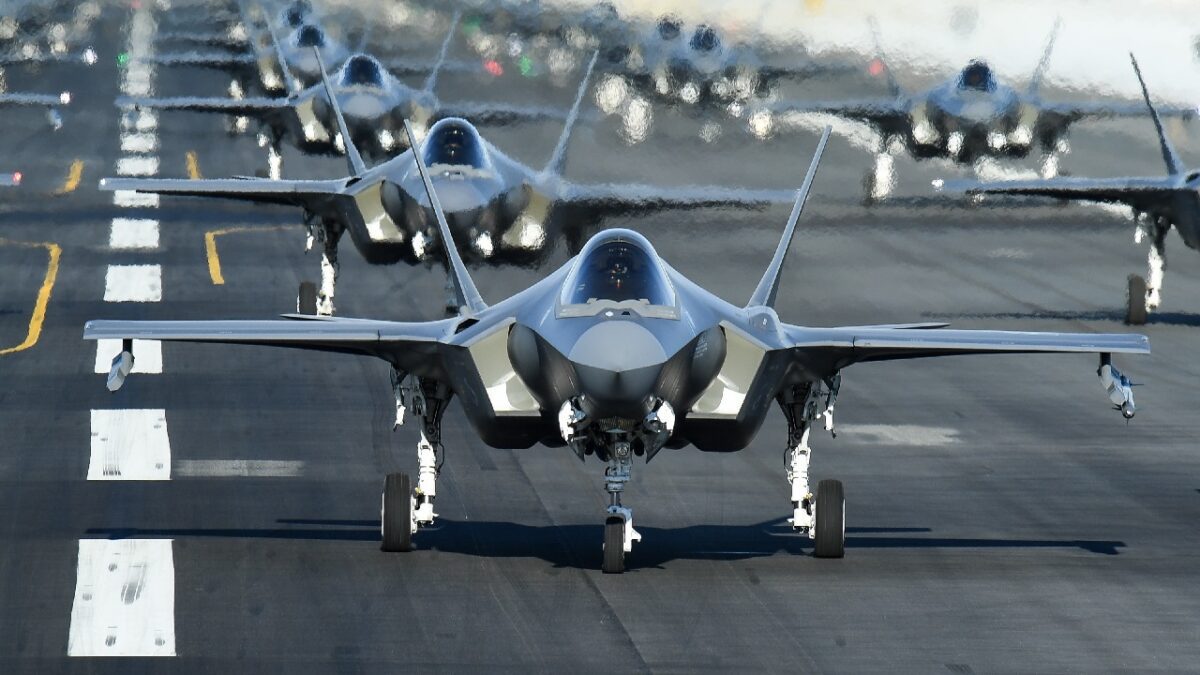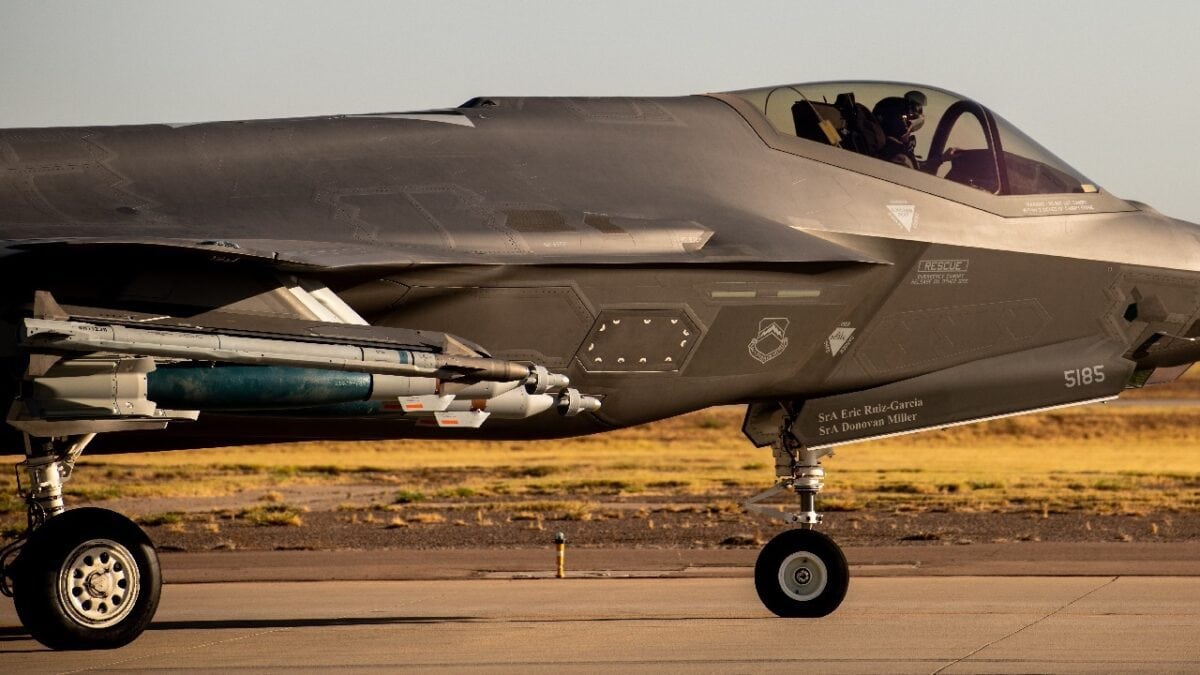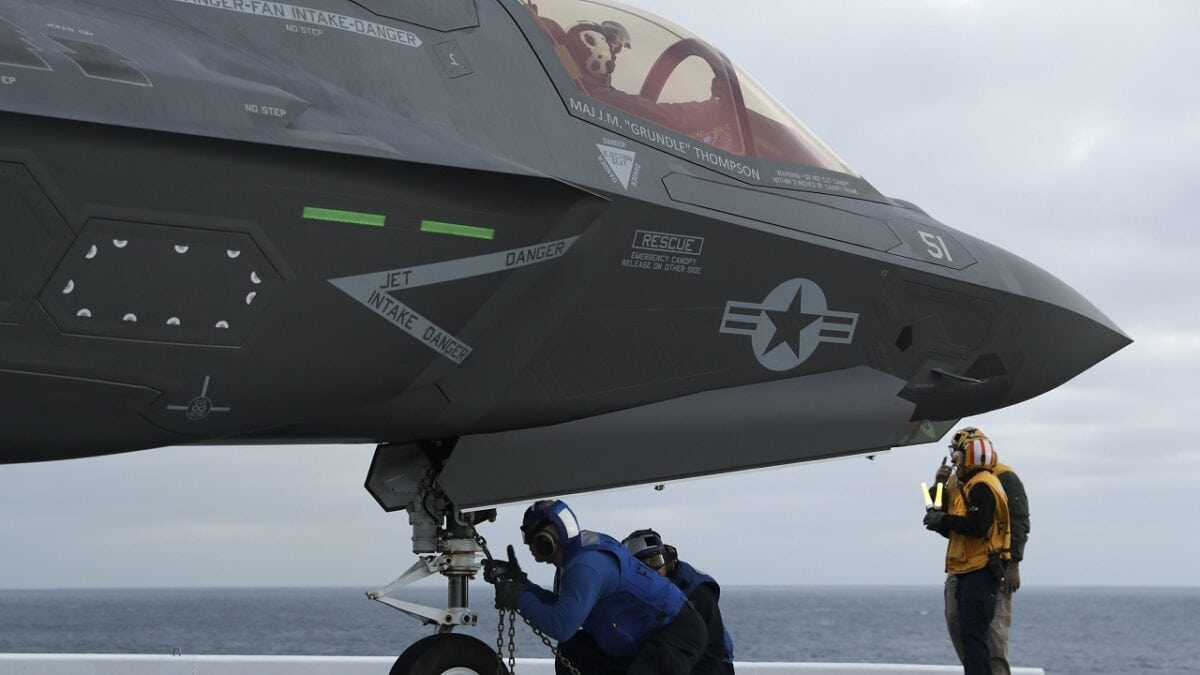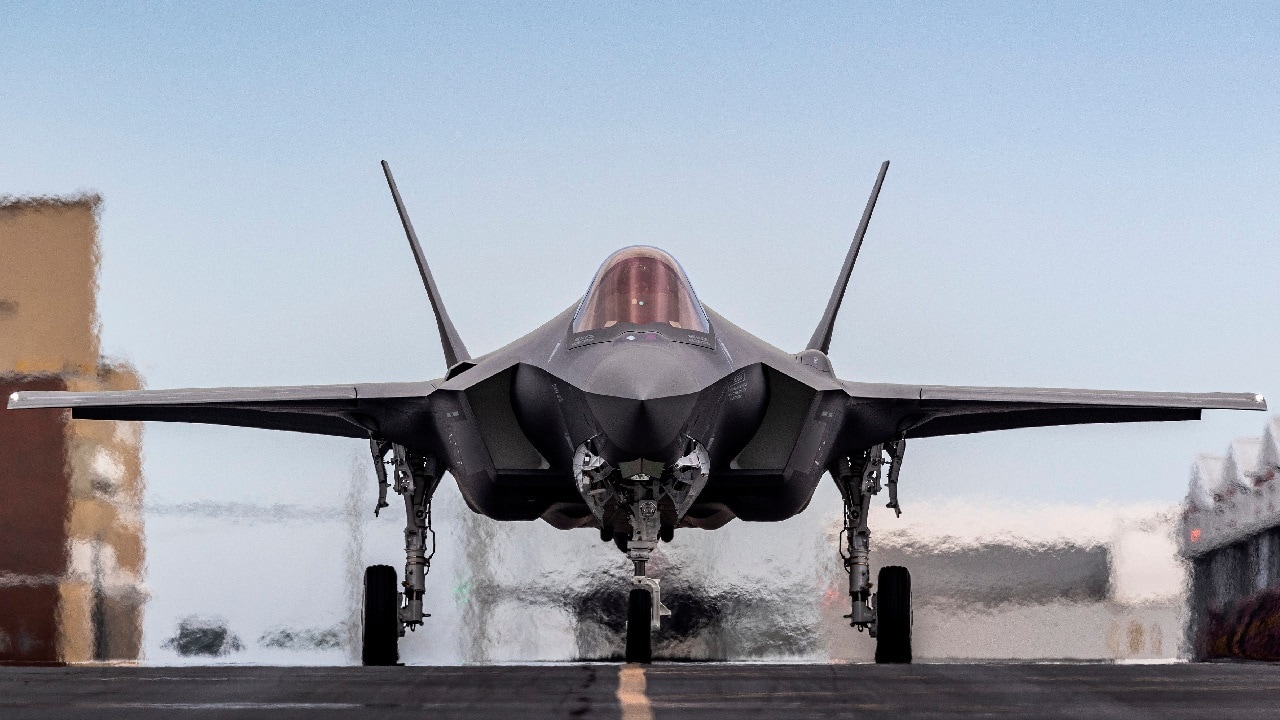Sure, the F-35 isn’t cheap and hasn’t always been able to stay out of the news cycle with some negative attention. Nonetheless, the war in Ukraine means nations all over Europe and all over the world want 5th-generation stealth fighters. And that means the F-35 is a sales machine:
It was the mid-1990s, and the U.S. military did not have the Cold War to worry about anymore. It had successfully shocked the world while dominating the Iraqis in Operation Desert Storm. The Balkans were another problem, and the Air Force made numerous precision-guided munitions strikes against Serb-held positions in Bosnia and Herzegovina. That operation wrapped up in 1995.
So, Air Force acquisition experts and future force planners had time to think. Airplanes such as the F-16 Fighting Falcon, the F/A-18 Hornet, the A-10 Warthog, and the AV-8B Harrier II were long in the tooth. Would it be possible for one airplane with three variants that could serve the Air Force, Navy, and Marine Corps replace those older platforms? Enter the F-35.
F-35: The New Jet Was Going to Be a Huge Undertaking
The U.S. military wanted to find out. First, this new airplane would have to be stealthy.
Second, it needed to have multiple roles to replace mission-focused airplanes such as conventional take-off and landing, carrier operations, and short takeoff and vertical landing.
And finally, the Pentagon envisioned a single-seat, single-engine fighter that could penetrate contested air space, dogfight along the way, drop or launch conventional or precision-guided munitions, and then fight its way back to base.
Not An Easy Build
This was going to be difficult. It would require hundreds of millions of dollars to prove the concept and meet all requirements. Three variants for three different service branches would have to emerge from one program called the Joint Strike Fighter. Weapons would be internal for better radar evasion. It would need to be sizable to carry more fuel. The military envisioned that it could collect and share intelligence, surveillance, and reconnaissance data plus electronic warfare capability. And don’t forget high-speed flight between MACH 1 and MACH 2. Allies would also utilize it, so it needed compatibility for combat operations with partner countries.
Costs Quickly Mounted Up
It would become the largest and most expensive acquisition program in the Department of Defense. Just in FY22 alone, the government spent $9.4 billion in procurement and $2.1 billion in research and development.
Two Defense Titans Go Head to Head
From 1997 to 2001, both Lockheed Martin and Boeing were assigned to build and test two airplanes that could demonstrate the technology to meet all of those requirements. In 2001, Lockheed Martin developed the X-35, winning against Boeing’s X-32 after both companies demonstrated prototypes of a stealth fighter capable of vertical landings.
Quick Word on Specifications
The F-35 has an F135-PW-100 engine and an F135-PW-600 for the STOVL variant. This pushes out 25,000 pounds of thrust and 26,000 pounds for the STOVL. The maximum speed is MACH 1.6. The maximum range is 1,200 nautical miles and 900 nautical miles for the jump jet.
The F-35 is now nuclear-capable and packed with a full slate of conventional and precision-guided munitions from Sidewinders and AMRAAMs to JDAMs and Small Diameter Bombs.
Former Thunderbirds Squadron Commander Shares His Thoughts on the F-35 with 19FortyFive
I caught up with John Venable, Senior Research Fellow in Defense Policy at the Heritage Foundation and former F-16 pilot, with experience leading the Thunderbirds Aerial Demonstration Squadron. Venable believes the F-35 is a mega-hit.
“The F-35 is the most advanced operational fighter in the world. The F-35A comes equipped with everything it needs to fight in the highest threat regions of the world and it costs just over $80 million per jet. It can find, fix, target and destroy the most advanced surface-to-air missile systems and air-to-air fighters before those systems can engage it. Every other fourth or four-plus generation fighter costs more right off the production line and each requires additional equipment (targeting pods, IRST pods, etc.) to enable it to fly operational missions. Even though its logistical supply chain for spare part production is not fully developed, its mission capable rate is among the highest in the Air Force inventory. In full-up scenarios, even F-22A pilots have been surprised by the F-35A’s capability and Raptor pilots are amongst the Lightning’s biggest fans,” Venable explained.
There have been some loud F-35 critics over the years, but Venable believes that many issues have been fixed. Plus, it has advantages over the F-15EX.
“The developmental price tag and programmatic delays are the biggest drawbacks pundits still point to, but those issues are well behind the F-35. You will still see articles about the F-35A’s limited air-to-air dogfighting capabilities, low mission capable rates and high cost per flying hour (CPFH) compared to other jets, but those issues are no longer true. The F-35A costs less to acquire, less to fly (CPFH and cost per tail per year) than the F-15EX, and it can fly in or around the highest threat regions of the world. The F-15EX will be limited to low to medium threat environments as soon as it becomes operational, and it will be irrelevant in a fight with China,” Venable said.

The active duty 388th and Reserve 419th Fighter Wings conducted an F-35A Combat Power Exercise at Hill Air Force Base, Utah, Jan. 6, 2020. The exercise, which was planned for months, demonstrated their ability to employ a large force of F-35As — testing readiness in the areas of personnel accountability, aircraft generation, ground operations, flight operations, and combat capability against air and ground targets. A little more than four years after receiving their first combat-coded F35A Lightning II aircraft, Hill’s fighter wings have achieved full warfighting capability. (U.S. Air Force photo by R. Nial Bradshaw)

An F-35A Lightning II taxis down the flightline in a Beast Mode weapons configuration July 22, 2020, at Luke Air Force Base, Ariz. The weapons configuration consists of six inert GBU-12 bombs, four mounted onto the wings and two loaded into the weapons bay, as well as an AIM-9X air-to-air training missile. The Beast Mode weapons configuration provides F-35 B-Course student pilots with the additional training and experience needed for potential combat sorties and helps train the world’s greatest F-35 pilots and combat ready Airmen. (U.S. Air Force photo by Staff Sgt. Alexander Cook)

220119-N-CM110-2023 PACIFIC OCEAN (Jan. 19, 2022) — Sailors chain down an F-35B Lightning II attached to Marine Operational Test and Evaluation Squadron (VMX) 1 on the flight deck aboard amphibious assault ship USS Tripoli (LHA 7), Jan. 19. Tripoli is underway conducting routine operations in U.S. 3rd Fleet. (U.S. Navy photo by Mass Communication Specialist 3rd Class Maci Sternod)
The airplane is pilot-friendly – just ask those who have flown it.
“While I have never flown the F-35, with the production delays, cost overruns, and all the bad publicity it was getting, I was skeptical of the jet, so I decided to interview experienced fighter pilots that had flown other fighters and then transitioned to the F-35A. Over the course of two research papers (2016 and 2019) I interviewed more than 60 pilots (51 very experienced, 10 new to fighters) who were currently flying the F-35 and, hands down, none of them would go back to their previous jets. From handling in dogfights, to the overall employment of the entire weapons system, they felt they were flying the best fighter in the world.”
Now serving as 1945s New Defense and National Security Editor, Brent M. Eastwood, PhD, is the author of Humans, Machines, and Data: Future Trends in Warfare. He is an Emerging Threats expert and former U.S. Army Infantry officer.

